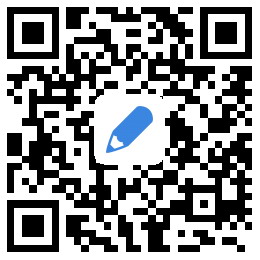For the love of Chocolate
Most people know that chocolate is made from cocoa and that the origins of chocolate can be traced back to Central and South America. For centuries, the natives there regarded cocoa as a gift from the gods. But how did chocolate go from being the food of the gods to being the food of love?
Around A.D. 600, the Mayas were the main aboriginal group in Central America. They established the first cocoa plantations and used the cocoa bean as the main ingredient in a dark, bitter drink that we would call “chocolate.” The Mayas believed that chocolate had mystical properties---but cocoa also had commercial value. In fact, cocoa beans were used as a form of currency that was worth its weight in gold!
Spanish conquistador Hernando Cortez was the first European explorer to realize cocoa's commercial possibilities. When he arrived in the New World in 1519, he soon established his own cocoa plantation. In 1529, Cortez returned to Spain and introduced chocolate---as a drink mixed with sugar, vanilla, and cinnamon---to European society.
It caught on---especially with the nobility, who fancied hot chocolate as an aphrodisiac. As its popularity spread, people found new ways to make and use chocolate. These days, chocolate is enjoyed as both a tasty treat and a romantic indulgence. Whether it is in delectable desserts or crunchy candy, people the world over are still in love with chocolate.
大多數(shù)人都知道巧克力由可可制成,它起源于中南美洲。幾個(gè)世紀(jì)以來(lái),當(dāng)?shù)氐木用癜芽煽煽醋魃竦亩髻n。但巧克力是怎樣從神的食品變成了愛(ài)情食品的呢?
公元600年左右,瑪雅人是中美洲主要的土著居民。他們建立了第一座可可種植園,并用可可豆為主要原料,制成了一種又黑又苦的飲料,我們叫“巧克力”。瑪雅人相信巧克力具有神秘的特性,也具有商業(yè)價(jià)值。實(shí)際上,可可豆曾經(jīng)被當(dāng)作一種與金子等值的貨幣形式!
西班牙征服者赫爾南多·科蒂斯是第一位了解可可的商業(yè)潛力的歐洲探險(xiǎn)家。他1519年抵達(dá)新大陸,不久就建立了自己的可可種植園。1529年,赫爾南多·科蒂斯回到西班牙,他將巧克力——一種混合糖、香草及肉桂的飲料引入歐洲社會(huì)。
巧克力倍受貴族們的親睞,他們視熱巧克力為一種春藥。隨著巧克力廣為普及,人們發(fā)現(xiàn)了一些制造和使用巧克力的新方法。現(xiàn)在,巧克力被人們當(dāng)作一種可口的美食和浪漫的享受。無(wú)論是在美味的甜點(diǎn)里,還是在酥脆的糖果中,世界各地的人們依舊對(duì)巧克力迷戀不已。
American-made chocolate and cocoa(可可) products number in the hundreds. There is a fascinating(迷人的)story behind these wonderful products.Chocolate Through the YearsThe story of chocolate, as far back as we know it, begins with the discovery of America. Until 1492, the Old World(指歐洲大陸,相對(duì)于美洲大陸)knew nothing at all about the delicious and stimulating flavor富有刺激性的口味) that was to become the favorite of millions.The Court of King Ferdinand and Queen Isabella got its first look at the principal ingredient(調(diào)料、原料)of chocolate when Columbus returned in triumph from America and laid before the Spanish throne(王位)a treasure trove of many strange and wonderful things. Among these were a few dark brown beans(豆)that looked like almonds(杏仁)and seemed most unpromising(無(wú)指望的). They were cocoa beans, today's source of all our chocolate and cocoa.The King and Queen never dreamed how important cocoa beans could be, and it remained for Hernando Cortez(科爾特斯), the great Spanish explorer, to grasp(把握住)the commercial possibilities of the New World offerings.Food of the GodsDuring his conquest of Mexico, Cortez found the Aztec Indians(阿茲特克印第安人)using cocoa beans in the preparation of
the royal drink of the realm, "chocolate," meaning warm liquid. In 1519, Emperor Montezuma, who reportedly drank 50 or more portions daily, served(提供,招待) chocolate to his Spanish guests in great golden goblets(高腳杯), treating it like a food for the gods.For all its regal(王室的) importance, however, Montezuma's chocolate was very bitter(苦), and the Spaniards did not find it to their taste. To make the concoction(調(diào)制品) more agreeable to Europeans, Cortez and his countrymen conceived the idea of sweetening it with cane sugar.The new drink quickly won friends, especially among the Spanish aristocracy(貴族). Spain wisely proceeded to plant cacao in its overseas colonies, which gave birth to a very profitable(利潤(rùn)高的) business. Remarkably enough, the Spanish succeeded in keeping the art of the cocoa industry a secret from the rest of Europe for nearly a hundred years.Chocolate Spreads to EuropeSpanish monks, who had been consigned(托運(yùn)) to process the cocoa beans, finally let the secret out. It did not take long before chocolate was acclaimed(受到歡迎) throughout Europe as a delicious, health-giving food. For a while it reigned(主宰)as the drink at the fashionable Court of France. Chocolate drinking spread across the Channel to Great Britain, and in 1657 the first of many famous English Chocolate Houses(作坊)appeared.The 19th Century marked two more revolutionary developments in the history of chocolate. In 1847, an English company introduced solid "eating chocolate" through the development of fondant(半軟糖) chocolate, a smooth and velvety(光滑柔和)variety that has almost completely replaced the old coarse grained(顆粒粗糙的) chocolate which formerly dominated(統(tǒng)領(lǐng)) the world market. The second development occurred in 1876 in Vevey, Switzerland, when Daniel Peter devised a way of adding milk to the chocolate, creating the product we enjoy today known as milk chocolate.Chocolate Comes to AmericaIn the United States of America, the production of chocolate proceeded at a faster pace than anywhere else in the world. It was in pre-Revolutionary New England-1765, to be exact-that(可以肯定地說(shuō))the first chocolate factory was established in this country.During World War II, the U.S. government recognized chocolate's role in the nourishment(營(yíng)養(yǎng)品)and group spirit(士氣、團(tuán)隊(duì)精神) of the Allied Armed Forces, so much so that(到這樣的程度以至于)it allocated valuable shipping space(分配寶貴的船艙空間)for the importation(運(yùn)輸) of cocoa beans. Many soldiers were thankful for the pocket chocolate bars(塊、條) which gave them the strength to carry on until more food rations(配給)could be obtained. Today, the U.S. Army D-rations(美國(guó)陸軍D類(lèi)配給食品) include three 4-ounce chocolate bars(4盎司巧克力塊)late has even been taken into space as part of the diet(食品供應(yīng)、食譜)astronauts(宇航員).
love
本文地址:http://www.autochemexpert.com/writing/essay/99241.html




